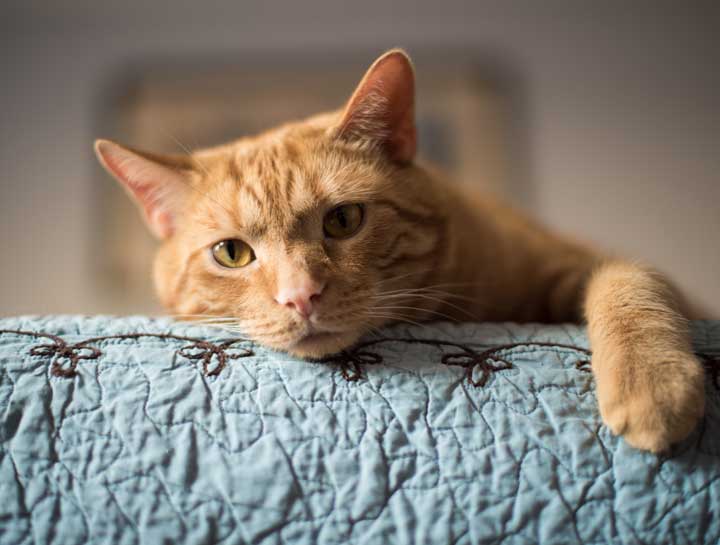Cat Renal Disease: Symptoms and How to Slow the Disease

One of the things our cat veterinarians often hear is, “Help! My cat keeps peeing outside the litter box!”
With that in mind, we thought this may be a great time to chat about cat renal disease.
We’ve asked our vets to share:
- Common cat renal disease symptoms.
- How to slow the disease for your feline friend.
First things first, what is cat renal disease?
Quite simply, at some point, there was damage to your cat’s kidneys or the kidneys started deteriorating. Your cat’s kidneys no longer work as they should.
The good news is there are visible symptoms of cat renal disease.
For example, you may notice your cat:
- Has a rougher hair coat than normal
- Has sunken-in eyes (this can indicate dehydration)
- Is drinking a lot
- Is peeing a lot
- Is peeing outside the litter box (if your cat is peeing more, the litter box may be getting dirtier faster)
- Is sitting by the water bowl (your kitty is thirsty, but he or she won’t drink)
- Is hiding and not being as social as usual (due to not feeling well)
- Is losing weight
- Has a lack of appetite and is vomiting (the later stages of cat renal disease)
But when it comes to cat renal disease symptoms, the bad news is…
75% of your cat’s kidney function is usually gone before he or she shows outward symptoms (such as drinking and peeing a lot).
In addition, cats are really good at hiding discomfort. You may not know you’re your cat isn’t feeling well.
A lot of times a practiced eye can see the symptoms (such as rougher coats of hair) before even the most attentive cat owner notices them.
That’s why our veterinarians recommend a cat annual checkup.
It gives us an opportunity to diagnose cat renal disease much sooner and slow the progression of the disease.
And one of the keys to early diagnosis is running a blood test.
Typically, we recommend doing the first annual blood test on your cat when he or she is seven or eight years old.
Most cats’ kidneys are still relatively normal at this age, so we can get a good baseline reading.

If we have your cat’s history and we begin to see the readings creep up, we can put your cat on special cat food to slow the progression of cat renal disease.
Making small changes in your cat’s diet can make a big difference in your cat’s quality and length of life!
If we wait until your cat is 11 years old before running blood work for the first time, your kitty may have developed cat renal disease without exhibiting any of the symptoms yet. This can make it trickier to determine whether your cat’s blood work readings are normal or abnormal.
As a result, your cat may need additional testing and treatment measures beyond just making a diet change.
Has your kitty been checked for cat renal disease lately?
If you live in the Castle Rock area and you’d like to schedule a cat annual checkup, we welcome your call.
